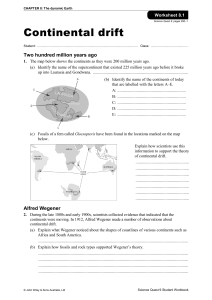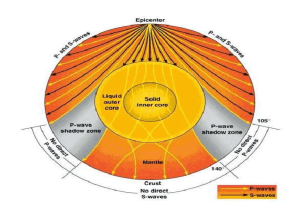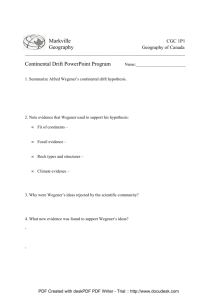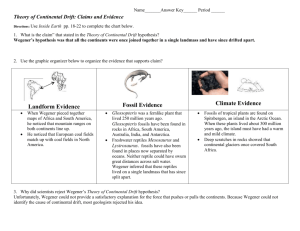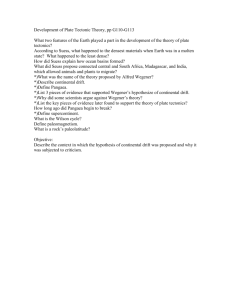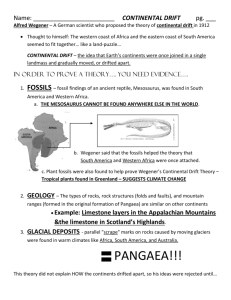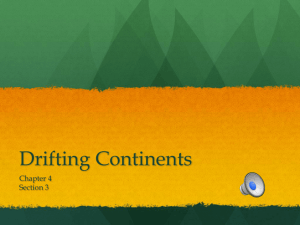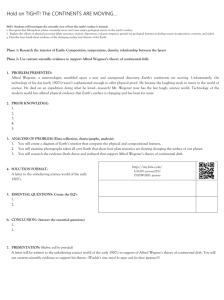Continental Drift Theory: Evidence & History
advertisement
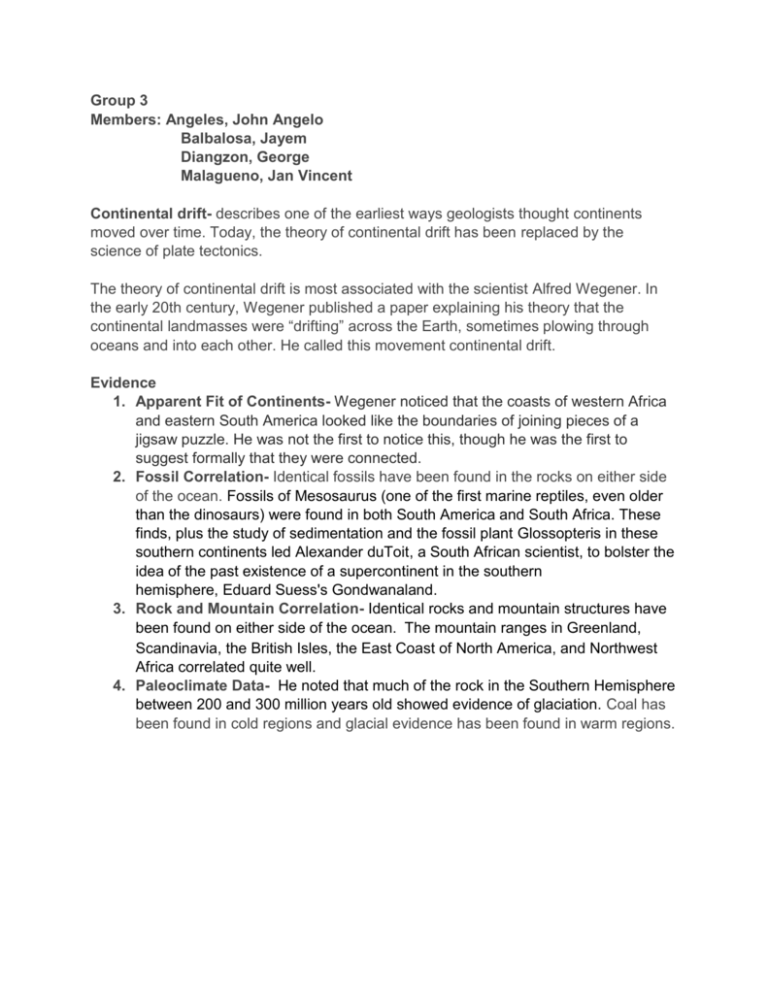
Group 3 Members: Angeles, John Angelo Balbalosa, Jayem Diangzon, George Malagueno, Jan Vincent Continental drift- describes one of the earliest ways geologists thought continents moved over time. Today, the theory of continental drift has been replaced by the science of plate tectonics. The theory of continental drift is most associated with the scientist Alfred Wegener. In the early 20th century, Wegener published a paper explaining his theory that the continental landmasses were “drifting” across the Earth, sometimes plowing through oceans and into each other. He called this movement continental drift. Evidence 1. Apparent Fit of Continents- Wegener noticed that the coasts of western Africa and eastern South America looked like the boundaries of joining pieces of a jigsaw puzzle. He was not the first to notice this, though he was the first to suggest formally that they were connected. 2. Fossil Correlation- Identical fossils have been found in the rocks on either side of the ocean. Fossils of Mesosaurus (one of the first marine reptiles, even older than the dinosaurs) were found in both South America and South Africa. These finds, plus the study of sedimentation and the fossil plant Glossopteris in these southern continents led Alexander duToit, a South African scientist, to bolster the idea of the past existence of a supercontinent in the southern hemisphere, Eduard Suess's Gondwanaland. 3. Rock and Mountain Correlation- Identical rocks and mountain structures have been found on either side of the ocean. The mountain ranges in Greenland, Scandinavia, the British Isles, the East Coast of North America, and Northwest Africa correlated quite well. 4. Paleoclimate Data- He noted that much of the rock in the Southern Hemisphere between 200 and 300 million years old showed evidence of glaciation. Coal has been found in cold regions and glacial evidence has been found in warm regions.
